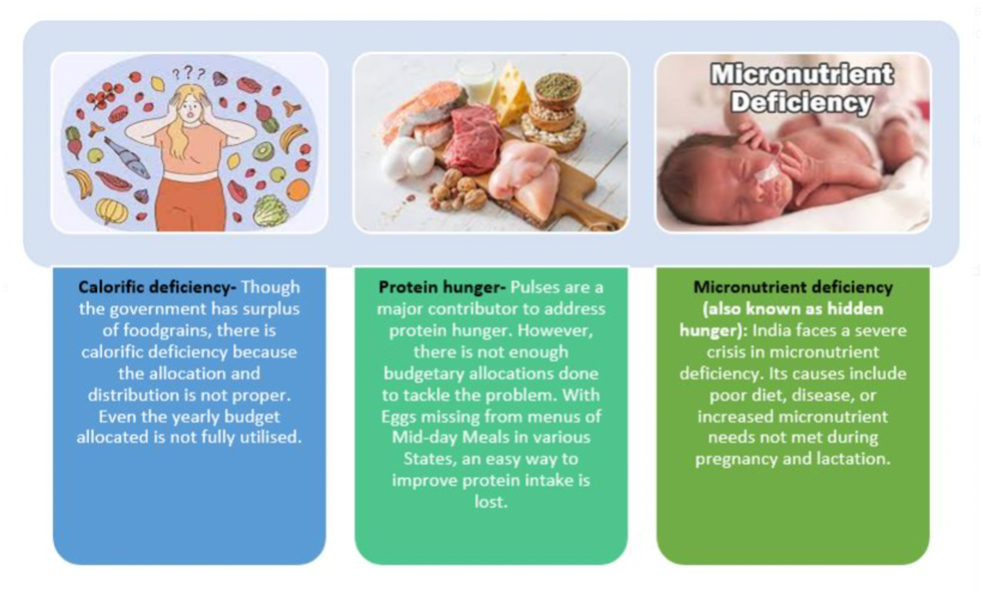Thursday, 8th December 2022
RBI hikes key interest rate by 35 bps
In News
The RBI’s Monetary Policy Committee (MPC) has increased the policy Repo Rate or the rate at which the RBI lends funds to banks, by 35 basis points to 6.25% in a bid to rein in retail inflation.
About the Recent hikes:
- The MPC also lowered its growth forecast to 6.8% from 7 per cent for the current financial year amid concerns over the “bleak” global economic outlook.
- The hike in Repo rate, fifth since May 2022, has raised rates by a cumulative 225 bps since the start of the tightening cycle in April 2022. The last three hikes in Repo rate were by 50 bps each.
RBI retained its retail inflation forecast at 6.7 per cent for 2022-2023 with focus on withdrawal of accommodation.
Why has RBI raised its interest rate?
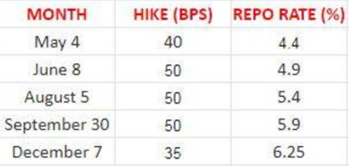
- High inflationary pressure: MPC is mandated to maintain retail inflation at 4 per cent (+/-2 per cent). The inflation rate in the country has been hovering above 6 for the entire 2022.
- Rise in core inflation: Despite easing of retail inflation to a level of 6.77 rise in core inflation i.e. the non-food, non-oil part of the inflation, has edged up again after moderating over the summer.
- Weak rupee: Weakness in the rupee against the US dollar is adding to inflationary concerns at the RBI given that a third of the CPI basket consists of imports.
- Escalating geopolitical tensions: Although India’s direct trade exposure to countries at the epicentre of the conflict is limited; the war could potentially impede the economic recovery through elevated commodity prices and global spill-over channels.
- Supply-side disruptions: Concerns over protracted supply disruptions have rattled global commodity and financial markets.
What are the implications of the increase in the Repo Rate for the economy?
- Impact on demand: The hikes are set to raise the lending rates in the banking system and impact the demand in the economy. When interest rates are raised, it makes money more expensive, thereby resulting in a reduction of demand in the economy and bringing down inflation.
- Higher cost of funds: The rate hike will force banks and non-banking finance companies to increase lending rates and result in higher equated monthly instalments (EMIs) of existing borrowers.
- Increase in deposit rates: Deposit rates are also expected to rise in the near future. FD rates of banks have increased
- Controlled Inflation: The hike will help in moderating inflation in the country. RBI has already intervened to support the rupee and further rate rises are likely to support the currency and to curtail underlying inflationary pressure.
Source:
https://indianexpress.com/article/explained/explained-economics/reserve-bank-of-india-rate-hike-explained-8310486/
Click the link below to attempt the daily MCQs and the Mains based questions.
Global Status of Black Soils - Edukemy Current Affairs
In News:
- Food and Agriculture Organization (FAO) has recently released a report titled “Global status of black soils”
- It is the first such report and was released on the occasion of World Soil Day which is celebrated on December 5 every year.

- According to the findings, most of the black soil suffers from moderate to severe erosion processes, as well as nutrient imbalances, acidification and biodiversity loss.
- Globally, the major factors which led to decline in quality of black soils included land-use change, unsustainable management practices and excessive use of agrochemicals.
- Black soils which feed the global population, are under threat, with most losing at least half of their soil organic carbon (SOC)
- The inherent fertility of the black soils makes them the food basket for many countries and thus there is need to protect these for sustainable global food supply.
Major findings on Black Soil:
- About: Black soils are characterised by a thick, dark-coloured soil horizon rich in organic matter
- Potential: It is home to 2.86 per cent of the global population and had 36 per cent of cropland, 8.05 per cent of global SOC stock and 30.06 per cent SOC stock of global cropland.
- Food provider: These soils are key for food security and the world economy as nearly 66 per cent of sunflower seeds, 51 per cent of small millet, 42 per cent of sugar beet, 30 per cent of wheat and 26 per cent of potatoes globally are harvested from black soils.
- Global distribution: It is found maximum in Russia (327 million hectares) followed by Kazakhstan, China, Argentina, Ukraine, United States of America, Colombia, Canada, and Mexico among others.
- India: Black soils in India are spread over 5.46 lakh sq km (i.e., 6 per cent of the total geographical area of the country) and are mainly found in states of Maharashtra, Madhya Pradesh, parts of Karnataka, Andhra Pradesh, Gujarat and Tamil Nadu.
Importance of Black soils:
- Climate change: Black soils are paramount for climate change mitigation and adaptation, as they contain 2 percent of the world’s soil organic carbon (SOC) stocks and can provide 10 percent of the global SOC sequestration potential.
- Agriculture epicentres: These soils are extremely fertile and can produce high agricultural yields owing to their elevated moisture storage capacity.
- Future ready: These soils have potential to provide solution to mitigate human-induced climate change as they have ability to remove carbon from the atmosphere and lock it up in soil organic matter also known as carbon sequestration.
Challenges:
- Heavily exploited: The challenges faced by black soils arise from their preponderant role in food and fibre production under agricultural and livestock use.
- Loosing carbon stock: Black soils are quickly losing their SOC stocks with the carbon being released into the atmosphere mostly as carbon dioxide, exacerbating global warming.
- Texture damage: The soil has been over the years faced several physical structural deteriorations due to soil salinization, pollution with excess fertilizers, agrochemicals beside soil sealing due to urban advancement.
Source:
https://www.fao.org/documents/card/en/c/cc3124en
Click the link below to attempt the daily MCQs and the Mains based questions.
ISRO, Social Alpha MoU: SpaceTech Innovation Network
Why in news?
- Recently, the Indian Space Research Organisation (ISRO) has signed an MoU with Social Alpha, a multistage innovation curation and venture development platform for science and technology start-ups, to launch SpaceTech Innovation Network (SpIN).
|
About ISRO
About Social Alpha
|
What is SpIN?
- SpaceTech Innovation Network (SpIN) is India’s first dedicated platform for innovation, curation, and venture development for the burgeoning space entrepreneurial ecosystem.
- The tie-up is a one-of-a-kind public-private collaboration for start-ups and SMEs in the space industry.
- SpIN will primarily focus on facilitating space tech entrepreneurs in three distinct innovation categories:
- Geospatial Technologies and Downstream Applications;
- Enabling Technologies for Space & Mobility; and
- Aerospace Materials, Sensors, and Avionics.
Significance:
- It is a significant step forward in providing further stimulus to India’s recent space reform policies and will work towards identifying and unleashing the market potential of the most promising space tech innovators and entrepreneurs in India.
- Through this partnership, ISRO will support the creation of an open innovation and scale-up platform for all space ecosystem stakeholders and promote active collaboration to make early-stage space start-ups successful.
- Innovative technologies are expected to bring a paradigm shift in utilising the space applications to maximise the economic, social, and environmental benefits for the larger society.
- The selected start-ups and innovators will be able to access both Social Alpha’s and ISRO’s infrastructure and resources and they will be provided active handholding in critical areas including access to product design, testing and validation infrastructure, intellectual property management, go-to-market strategy, and access to long-term patient capital, among other technical and business inputs.
Start-ups in Space Sector
- According to the Economic Survey Report 21-22, there are now over 100 active space start-ups in India - the number of start-ups in this sector has more than doubled in the last year alone.
- According to SpaceTech Analytics, as of 2021 India ranked as the sixth-largest player in the industry internationally having 3.6% of the world’s space-tech companies. Whereas, the U.S. alone accounts for 56.4% of all companies in the space-tech ecosystem.
- Other major players are: U.K. (6.5%), Canada (5.3%), China (4.7%) and Germany (4.1%).
- In 2019, the Indian space industry was estimated to be worth $7 billion, and by 2024, it expects to reach $50 billion. The country’s standout feature is its cost-effectiveness.
- India has the distinction of being the first nation to orbit Mars on its initial attempt for a cost of $75 million, which is significantly less than Western norms.
Content Source Link:
https://www.thehindu.com/news/national/karnataka/isro-inks-mou-with-social-alpha-to-establish-spacetech-innovation-network/article66233892.ece/amp/
https://www.isro.gov.in/ISROAndSocialAlpha.html
https://www.aninews.in/news/business/business/isro-and-social-alpha-sign-mou-to-establish-spacetech-innovation-platform20221207182026/
Click the link below to attempt the daily MCQs and the Mains based questions.
India Inequality Report 2022: Digital Divide
In news
Oxfam India’s flagship publication—The India Inequality Report of 2022, has focussed on Digital Divide highlighting the extent of the digital divide in India and its impact on essential services such as education, health and financial inclusion.
Digital Divide
- As defined by the OECD, the digital divide refers to “the gap between individuals, households, businesses and geographic areas at different socio-economic levels with regard to both their opportunities to access information and communication technologies (ICTs) and to their use of the internet for a wide variety of activities.”
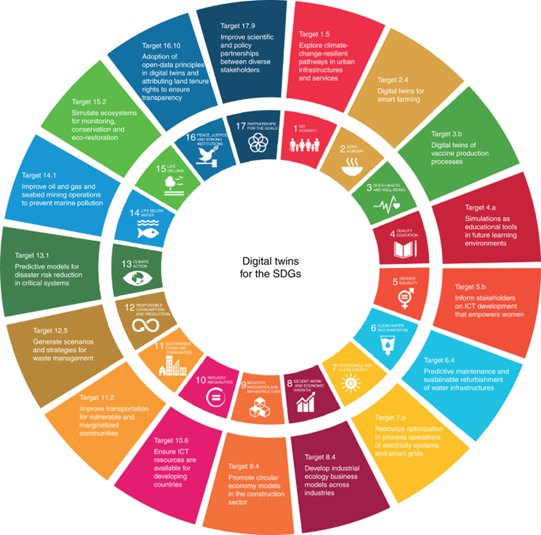
About the report findings
- The India Inequality Report is produced yearly to bring the attention of the public, policy makers and the government to the ongoing inequality crises in the country.

- According to the report, Indian women are 15% less likely to own a mobile phone and 33% less likely to use mobile internet services than me
- Among states, Maharashtra has the highest internet penetration, followed by Goa and Kerala.
- The digital push driven by the pandemic resulted in India experiencing the largest number of real-time digital transactions in 2021 at 48.6 billion.
- In rural India, the tendency to use formal financial services is lowest for ST households, followed by SC households and OBC households.
- The report notes the following in regards to 'access to computers':
- Likelihood for access is more for General and OBC groups than for the SC and ST populations.
- Chances of having a computer are higher with higher levels of education as well as income.
- Among all religions, Sikhs have the highest likelihood of having a computer followed by Christians, Hindus and lastly Muslims.
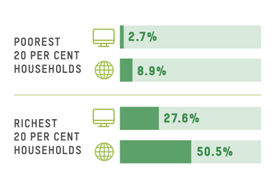

Report Recommendations for an inclusive, resilient and a sustainable digital environment
- With Economic Inequality being a key driver of the digital divide, efforts needed by the Government are: setting a decent minimum living wage, easing the indirect tax burden on citizens and provision of universal health and education services.
- Service providers need to ensure network availability through community networks and public WiFi/ internet access points.
- To ensure universal access to internet connectivity, it has to be made affordable by the Government investing in Digital Infrastructure, preventing monopolisation by private players, and lowering taxes on computers/phones.
- Conduct digital literacy camps, especially in rural India, to teach the use of technology in schools, and digitise panchayats and schools.
Source:
India Inequality Report 2022: Digital Divide
Women constitute one-third of Internet users in India: Study
Image source:
https://d1ns4ht6ytuzzo.cloudfront.net/oxfamdata/oxfamdatapublic/2022-12/Digital%20Divide_India%20Inequality%20Report%202022_PRINT%20with%20cropmarks.pdf?3l.73PGQrpQfYrnwWeoXV3BFjhETfA_p
https://media.springernature.com/lw685/springer-static/image/art%3A10.1038%2Fs41893-022-00923-7/MediaObjects/41893_2022_923_Fig4_HTML.png
Click the link below to attempt the daily MCQs and the Mains based questions.
Chat GPT - Edukemy Current Affairs
- Context: OpenAI's ChatGPT has created a storm on the internet given its capabilities. The AI-powered chatbot has crossed one million users, according to OpenAI CEO Sam Altman.
- ChatGPT is an AI chatbot based on the GPT-3.5 series of the natural language models, which can understand human language and respond in human-like language.

- Created with a focus on ease of use, it responds to everything - from stories, and mathematical solutions to theoretical essays.
- ChatGPT interacts in a conversational way making it possible to answer follow-up questions, admit its mistakes, challenge incorrect premises, and also reject inappropriate requests.
- Limitations:
- ChatGPT sometimes writes plausible-sounding but incorrect or factually incorrect answers.
- ChatGPT is often excessively verbose and overuses certain phrases, such as restating that it is a language model trained by OpenAI.
- It responds to harmful instructions, and inappropriate requests or exhibits biased behaviour.
Sources:
https://indianexpress.com/article/technology/tech-news-technology/openai-chatgpt-crosses-1-million-users-ceo-says-they-might-have-to-monetise-this-8306997/
https://www.business-standard.com/article/technology/openai-announces-chatgpt-chatbot-what-is-it-how-it-works-and-limitations-122120600319_1.html
Image source: https:
//www.moneycontrol.com/news/videos/trends/chatgpt-crosses-one-million-users-this-bot-answers-everything-whats-this-ai-from-elon-musk-9663081.html
Click the link below to attempt the daily MCQs and the Mains based questions.
Parliamentary session - Edukemy Current Affairs
- Context: The winter session of the Indian Parliament has been summoned by the President of India.

- The power to convene a session of Parliament rests with the government. The decision is taken by the Cabinet Committee on Parliamentary Affairs. The decision of the Committee is formalised by the President, in whose name MPs are summoned to meet for a session.
- India does not have a fixed parliamentary calendar. By convention, Parliament meets for three sessions in a year.
- Budget Session (February to May)
- Monsoon Session (July to September) and
- Winter Session (November to December).
- The period during which the House meets to transact its business is called a session.
- Under Article 108, the President may also call for a joint sitting of both Houses in case of
- Rejection of the Bill by the other House
- Disagreement to amend the bill
- Or, elapse of 6 months from the date of reception of the Bill.
Click the link below to attempt the daily MCQs and the Mains based questions.
BIMSTEC - Edukemy Current Affairs
- Context: BIMSTEC can serve as key to a new South Asian regional order.
- Key Highlights
- The Bay of Bengal Initiative for Multi-Sectoral, Technical and Economic Cooperation (BIMSTEC), is an intergovernmental multilateral organisation established in 1997 through Bangkok Declaration.
- Objectives:
- To accelerate the economic growth and social progress in the sub-region through joint endeavours in a spirit of equality and
- To promote active collaboration and mutual assistance on matters of common interest in the economic, social, technical and scientific fields.
- Members:
- BIMSTEC comprises five South Asian nations Bangladesh, Bhutan, Nepal, India and Sri Lanka and two ASEAN countries Myanmar and
- Pakistan is not a BIMSTEC member.
- BIMSTEC Charter was adopted earlier this year which is significantly better than the SAARC Charter. For instance, unlike the SAARC Charter, Article 6 of the BIMSTEC Charter talks about the ‘Admission of new members’ to the group.
|
BIMSTEC can also adopt ‘BIMSTEC Minus X’ similar to ‘ASEAN MINUS X’ for better coordination among the members. |
Source:
https://www.thehindu.com/opinion/op-ed/bimstec-as-key-to-a-new-south-asian-regional-order/article66235223.ece/amp/
https://bimstec.org/overview/#:~:text=Objectives%20of%20BIMSTEC%3A&text=To%20accelerate%20the%20economic%20growth,social%2C%20technical%20and%20scientific%20fields.
Image Source:
https://timesofindia.indiatimes.com/india/all-you-need-to-know-about-bimstec/articleshow/69555271.cms
Click the link below to attempt the daily MCQs and the Mains based questions.
SAARC - Edukemy Current Affairs
- Context: Reviving SAARC in the current scenario is too idealistic. so, the next best scenario is to look at other regional instruments such as BIMSTEC.
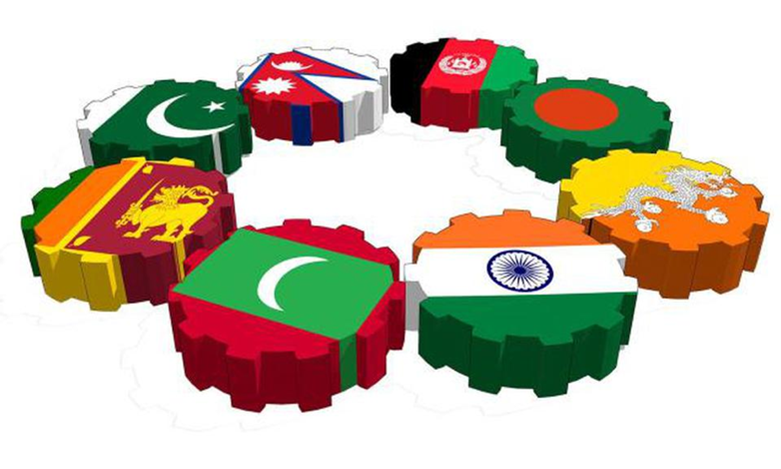
- December 8 is commemorated as SAARC Charter Day (South Asian Association for Regional Cooperation), an intergovernmental organisation, established by Bangladesh, Bhutan, India, the Maldives, Nepal, Pakistan and Sri Lanka to promote economic growth in South Asia. Afghanistan acceded to SAARC later.
- In the current government’s ‘neighbourhood first’ policy, SAARC is the only intergovernmental organisation with a pan-South Asia reach.
- SAARC aims to strengthen cooperation with other developing countries and to cooperate with international and regional organizations with similar aims and purposes.
- The objectives of the Association are
- to promote the welfare of the peoples of South Asia and to improve their quality of life;
- to accelerate economic growth, social progress and cultural development in the region and
- to provide all individuals with the opportunity to live in dignity and to realize their full potential.
Sources:
https://www.thehindu.com/opinion/op-ed/bimstec-as-key-to-a-new-south-asian-regional-order/article66235223.ece/amp/
Image source: https://www.thehindubusinessline.com/economy/saarc-fund-to-soon-launch-social-enterprise-programme-in-india-7-other-member-nations/article24185380.ece
Click the link below to attempt the daily MCQs and the Mains based questions.
National Bamboo Mission - Edukemy Current Affairs
Why in news? Advisory group formed for boosting the Bamboo sector development
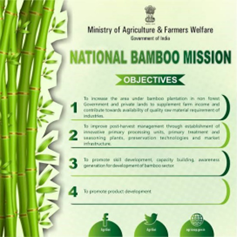 About
About
- National Bamboo Mission (NBM) was launched during 2018-19 as a Centrally Sponsored Scheme (CSS).
- NBM mainly focuses on the development of the complete value chain of Bamboo sector to link growers with consumers.
Nodal Ministry: The Ministry of Agriculture & Farmers Welfare.
https://pib.gov.in/PressReleaseIframePage.aspx?PRID=1881040
Click the link below to attempt the daily MCQs and the Mains based questions.
Mahaparinirvan Diwas - Edukemy Current Affairs
Why in news? P.M pays homage to Dr. Babasaheb Ambedkar on Mahaparinirvan Diwas
 About
About
- Parinirvana, regarded as one of the major principles as well as goals of Buddhism, is a Sanskrit term which means release or freedom after death.
- As per the Buddhist text Mahaparinibbana Sutta, the death of Lord Buddha at the age of 80 is considered as the original Mahaparinirvana.
- 6th December is observed to commemorate the unfathomable contribution to society given by Dr. Bhimrao Ambedkar and his achievements. Owing to Ambedkar’s status as a Buddhist leader, his death anniversary is referred to as Mahaparinirvana Diwas.
https://pib.gov.in/PressReleaseIframePage.aspx?PRID=1881072
Click the link below to attempt the daily MCQs and the Mains based questions.
Cyclone Mandous Hits Tamil Nadu
Why in news? Cyclone Mandous impacted the Tamil Nadu and Puducherry coasts.
About

- Mandous is a slow-moving cyclone that often absorbs a lot of moisture, carries a humongous amount of rainfall and gains strength in the form of wind speeds.
- The name has been suggested by the United Arab Emirates.
- It may subsequently strengthen further into a cyclone over southwest Bay of Bengal and move towards the Tamil Nadu and Puducherry
https://www.downtoearth.org.in/news/climate-change/cyclone-mandous-to-form-december-7-will-be-slow-moving-86408#:~:text=It%20will%20start%20affecting%20the,evening%20of%20the%20same%20day
Click the link below to attempt the daily MCQs and the Mains based questions.
e-Sanjeevani - Edukemy Current Affairs
Why in news? National telemedicine service of India - eSanjeevani achieves 8 crore teleconsultations
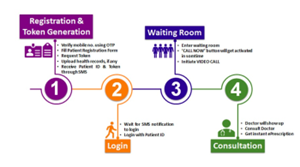 About
About
- It is a doctor-to-doctor telemedicine system, being implemented under the Ayushman Bharat Health and Wellness Centre (AB-HWCs) programme.
- AB-HWCs are envisaged to be the platform for delivery of an expanded range of primary health care services closer to the communities.
- eSanjeevaniOPD was launched amid the Covid-19 pandemic to enable patient-to-doctor tele-consultations.
- Ministry: Ministry of Health and Family Welfare
https://pib.gov.in/PressReleasePage.aspx?PRID=1881185
Click the link below to attempt the daily MCQs and the Mains based questions.
Sponge/Sponge Bleaching - Edukemy Current Affairs
Why in news? Marine recorded the largest-ever sponge bleaching event on the southern coastline of the New Zealand.
About
- Sponges are among the most ancient and abundant animals on rocky reefs across the world.
- They filter large quantities of water, capturing small food particles and moving carbon from the water column to the seafloor where it can be eaten by bottom-dwelling invertebrates.
- These invertebrates are consumed by organisms further up the food chain
- One species viz the cup sponge Cymbastella lamellata was affected due to a prolonged marine heatwave.
https://www.downtoearth.org.in/blog/world/loss-decay-and-bleaching-why-sponges-may-be-the-canary-in-the-coal-mine-for-impacts-of-marine-heatwaves-86401#:~:text=Published%3A%20Tuesday%2006%20December%202022&text=Marine%20sponges%20were%20thought%20to,event%20off%20its%20southern%20coastline
Click the link below to attempt the daily MCQs and the Mains based questions.
2Africa Pearls - Edukemy Current Affairs
Why in news? Bharti Airtel and Meta to jointly invest in global connectivity infrastructure that would extend a subsea cable — the 2Africa Pearls — to India.
About
- It is one of the largest subsea cable systems in the world. Its purpose is to provide faster internet connectivity to over 3 billion people by connecting Africa, Europe, and Asia.
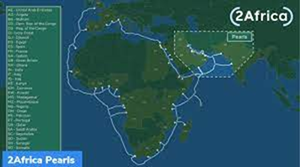
- In 2021, the tech giant Meta announced a new segment of 2Africa Pearls in collaboration with regional partners.
- The extension project seeks to cover landing locations in Oman, UAE, Qatar, Bahrain, Kuwait, Iraq, Pakistan, India, and Saudi Arabia.
- The extension will increase the total length of the 2Africa cable system to more than 45,000 km, making it the world’s longest subsea cable system.
https://www.business-standard.com/article/technology/meta-partners-with-airtel-to-extend-2africa-pearls-cable-system-to-india-122120500713_1.html
Click the link below to attempt the daily MCQs and the Mains based questions.
Connecting India’s East with the Indo-Pacific
Exam View: Indo-Pacific, Northeast India Look East Policy and Act East Policy, Significance of Northeast region of India, Indo-Pacific region.
IN News: Since 2018, India’s ‘Look East’ and ‘Act East’ policies have moved into the phase of Indo-Pacific policy and strategy. But what we in the national capital interpret as the ‘Indo-Pacific’ is different from the perceptions of this policy in North-eastern and eastern India.
About ten years ago, the Indo-Pacific region was first conceptualised. However, its importance has grown fairly quickly. The reorientation of geopolitics toward Asia is one of the factors contributing to the Indo-Pacific region's attractiveness.
The Indo-Pacific area is home to the world's greatest economies, including those of China, India, Japan, Indonesia, South Korea, Thailand, Australia, Taiwan, Malaysia, and the Philippines.
In 2018, India's "Look East" and "Act East" policies also transitioned into an Indo-Pacific strategy and policy. When it comes to enhancing India's ties with the Southeast and East Asian countries that are also a part of the Indo-Pacific, India's north-eastern area is extremely important from both a geopolitical and economic point of view.
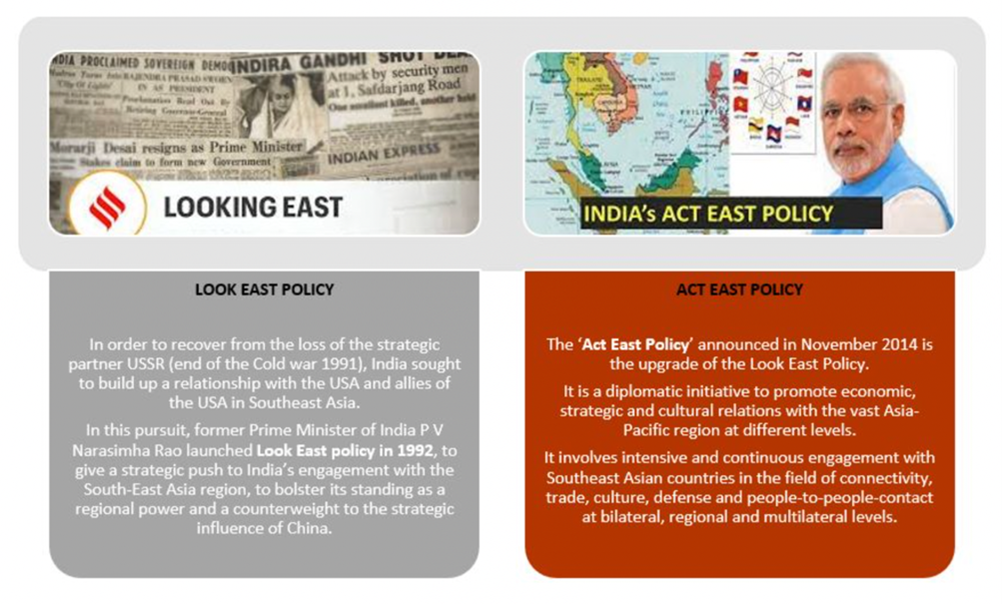
North East Region Connects India with Indo-Pacific Region
- Economic Importance of Northeast region: Investments in NER states basically have two fronts: The strategic location of the region connects the product markets of the larger Indian geography with the robust South and Southeast Asian markets.
- Resource availability: The existence of potent input market catalysts such as social (diversity, cultural richness), physical (potential energy supply hubs), human (inexpensive, skilled labor) and natural (minerals, forests) capitals in the region.
- North East Strategic Significance: North-East India is the gateway to South-East Asia and beyond. It is India’s land bridge to Myanmar. India's Act East Policy places the northeastern states on the territorial frontier of India's eastward engagement.
- Development of infrastructure: Japan has been engaged for decades in the development and modernization of infrastructure, particularly road connectivity, across states in the region. The country is presently involved in the construction of the Dhubri-Phulbari bridge across the Brahmaputra River.
Challenges in connecting North -East region with Indo Pacific region

Comprehensive implementation of Act East policy is relevant to the entire country but particularly important for the long-term growth of the NER. The agenda for its implementation must be prepared in active association with the State Governments of NER. Connectivity drives commerce, air links to the NER should be a priority. The development of road and railway projects should also be in accordance with disaster-resilient measures.
A fair assessment shows that there is plenty of room for future border management and road connectivity. that is both functional and people-focused. Japan has been India’s major partner in development of NER; such partnerships need to be leveraged with other countries too.
https://www.thehindu.com/opinion/op-ed/connecting-indias-east-with-the-indo-pacific/article66215378.ece
Click the link below to attempt the daily MCQs and the Mains based questions.
Basanti Devi: Saviour of Kosi - Edukemy Current Affairs
Background
Basanti Devi, Padma Shri awardee of 2022, led women from 200 Villages to rejuvenate Kosi River. She led a movement named ‘Save Kosi Movement’ to channelize the collective effort of the communities formed in each village, eventually, leading to revival of forests and making the stream perennial.
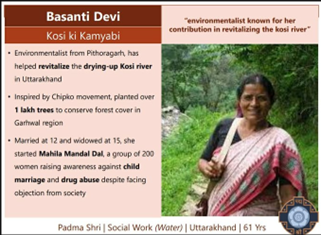 About Save Kosi Movement:
About Save Kosi Movement:
- The Kosi is a non-glacial river and gets its life from rainwater. The river would die if the surrounding forests of the catchment area are depleted.
- The region is plagued by deforestation, illegal sand mining and riverbed quarrying leading to a reduction in the inflow of rainwater from the catchment area of the river.
- Basanti Devi educated village women not to cut trees for firewood, to save the 168 km long Kosi.
- She later formed 200 women’s groups called ‘Mahila Mangal Dal’ that pledged to save the river by using only dead wood, planting lakhs of broad-leaved Oka trees, stopping hotels and resorts from siphoning off the water, and preventing and putting out forest fires.
Other rejuvenation efforts in India:
- Rajendra Singh, 2001 Ramon Magsaysay Award winner, led to the revival of about 3000 johads scattered across more than 650 villages in Rajasthan's Alwar district. He is called the “Waterman of India”
- Simon Oraon, popularly known as ‘Jharkhand’s Waterman,’ led a massive tree plantation drive and organized a well and pond digging initiative to store rainwater as well. He is a Padma Shri awardee.
- Chandrasekhar Kuppan, led to revival of the Naganadhi river in Tiruvannamalai district of Tamil Nadu with the help of local women of the villages
- Lingaraju Yale and his team revived Kumudvathi, a river in north Bangalore that was dry for the past 50 years.
Source:
https://www.thebetterindia.com/305488/basanti-devi-padma-shri-awardee-revived-kosi-river-and-uttarakhand-forest-video/
Click the link below to attempt the daily MCQs and the Mains based questions.
Share the article
Get Latest Updates on Offers, Event dates, and free Mentorship sessions.

Get in touch with our Expert Academic Counsellors 👋
FAQs
UPSC Daily Current Affairs focuses on learning current events on a daily basis. An aspirant needs to study regular and updated information about current events, news, and relevant topics that are important for UPSC aspirants. It covers national and international affairs, government policies, socio-economic issues, science and technology advancements, and more.
UPSC Daily Current Affairs provides aspirants with a concise and comprehensive overview of the latest happenings and developments across various fields. It helps aspirants stay updated with current affairs and provides them with valuable insights and analysis, which are essential for answering questions in the UPSC examinations. It enhances their knowledge, analytical skills, and ability to connect current affairs with the UPSC syllabus.
UPSC Daily Current Affairs covers a wide range of topics, including politics, economics, science and technology, environment, social issues, governance, international relations, and more. It offers news summaries, in-depth analyses, editorials, opinion pieces, and relevant study materials. It also provides practice questions and quizzes to help aspirants test their understanding of current affairs.
Edukemy's UPSC Daily Current Affairs can be accessed through:
- UPSC Daily Current Affairs can be accessed through Current Affairs tab at the top of the Main Page of Edukemy.
- Edukemy Mobile app: The Daily Current Affairs can also be access through Edukemy Mobile App.
- Social media: Follow Edukemy’s official social media accounts or pages that provide UPSC Daily Current Affairs updates, including Facebook, Twitter, or Telegram channels.


